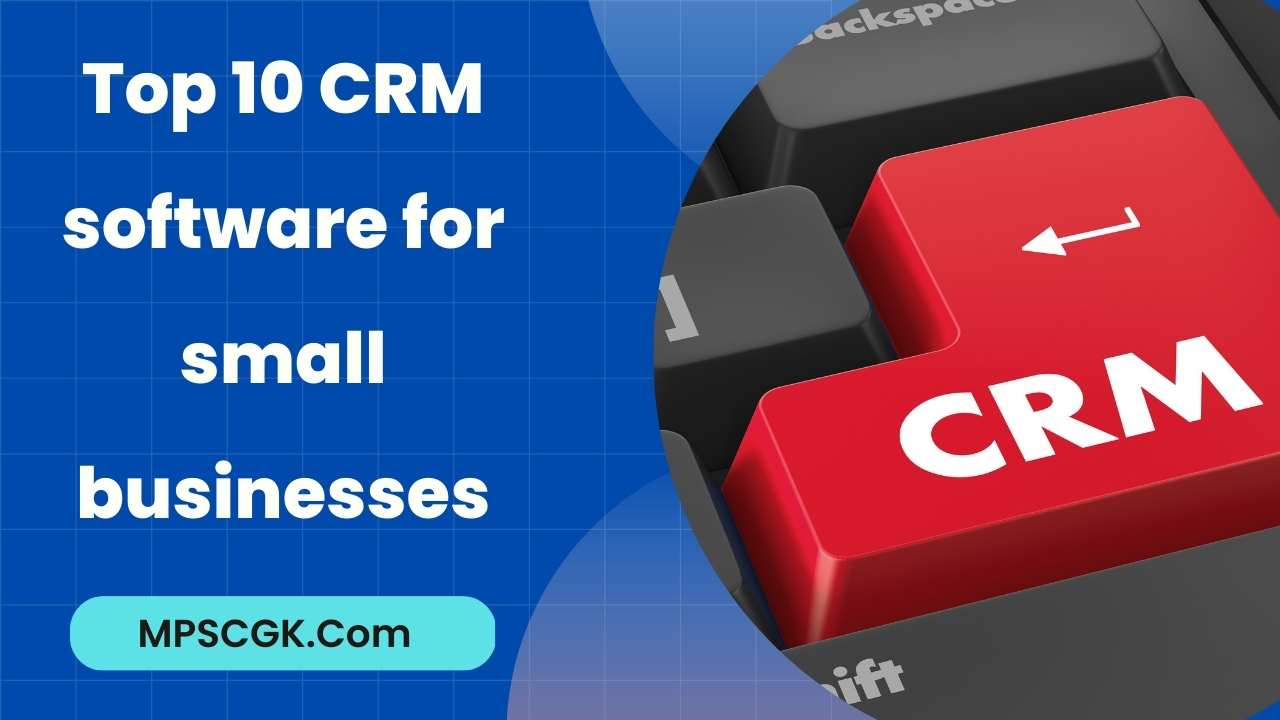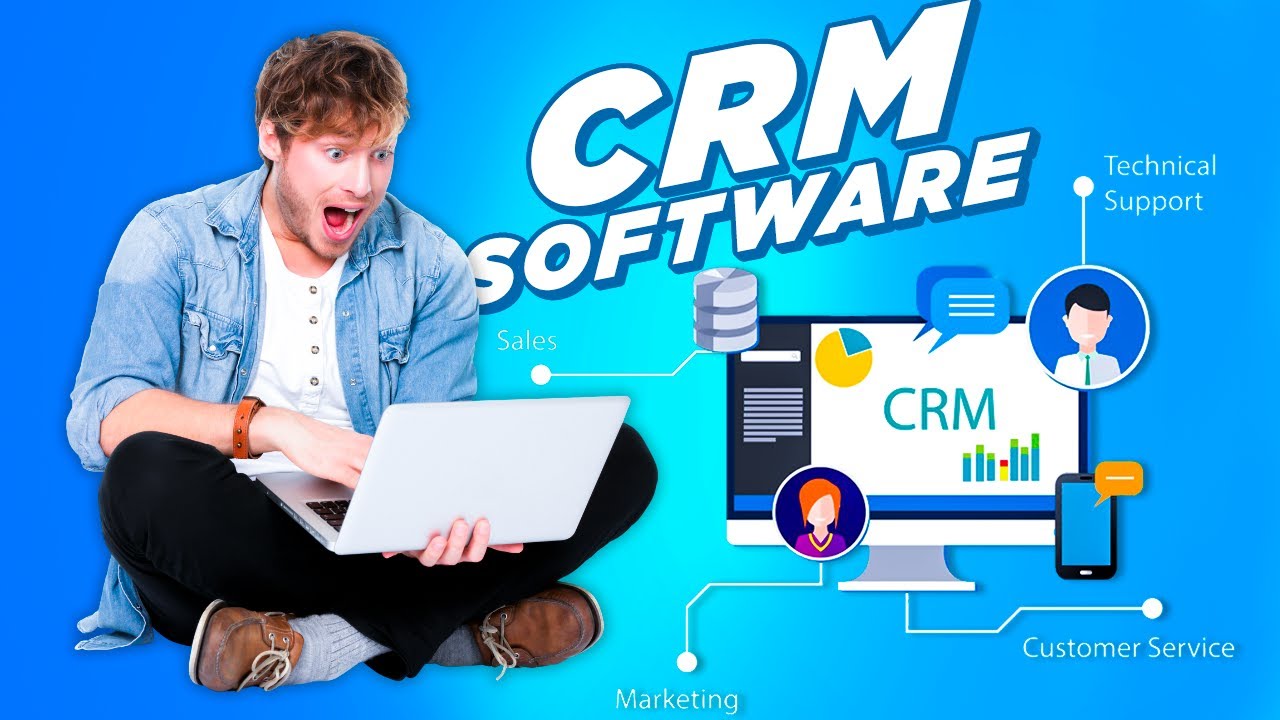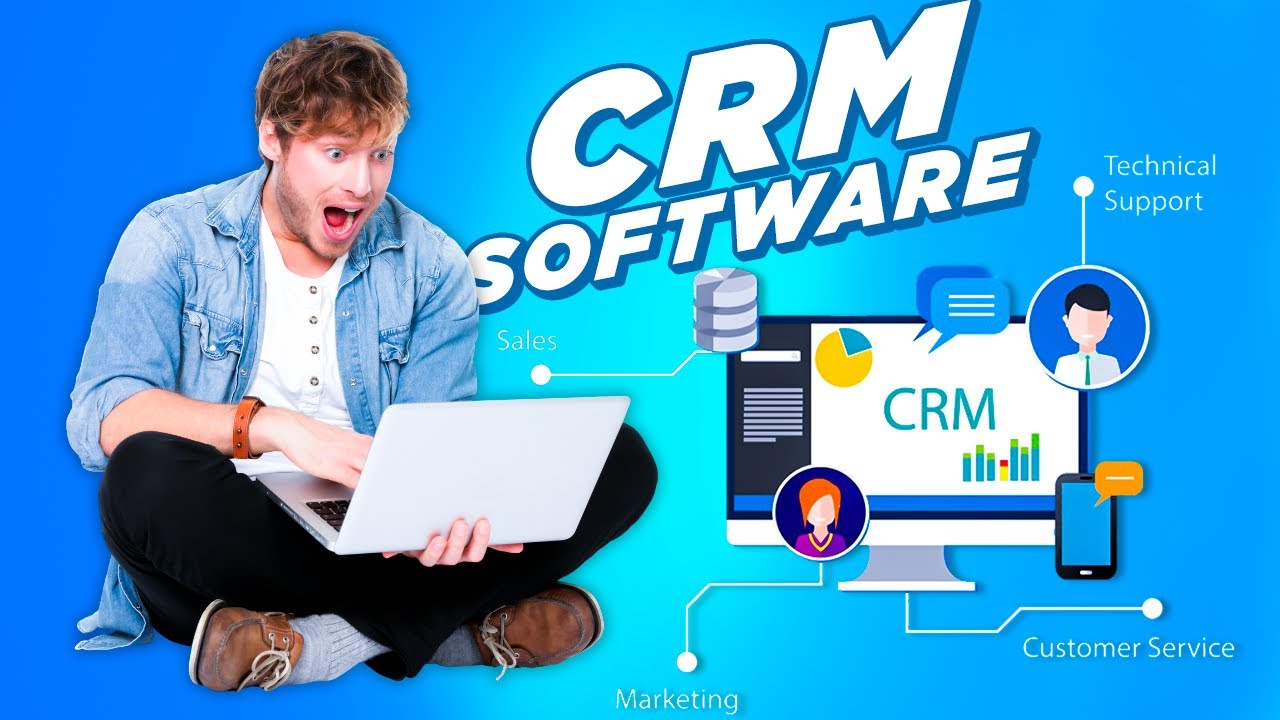Best CRM and project management for small business is crucial for growth. Efficiently managing client relationships and projects directly impacts profitability and operational smoothness. This guide explores the ideal CRM and project management software combinations for small businesses, considering factors like cost, scalability, and user experience. We’ll delve into essential features, compare popular options, and illustrate how integrated systems streamline workflows, ultimately boosting your bottom line.
From identifying your specific needs based on whether you’re service or product-based to choosing the right software and integrating them seamlessly, we’ll cover all aspects of selecting and implementing the perfect tools for your small business. We’ll also address common concerns regarding cost, training, and future scalability, ensuring a comprehensive understanding of the decision-making process.
Defining Needs for Small Businesses

Choosing the right CRM and project management tools is crucial for small businesses aiming for efficient growth. The right software can streamline operations, improve team collaboration, and ultimately boost profitability. However, selecting the appropriate tools requires a clear understanding of a small business’s specific needs and challenges.
Small businesses often face unique hurdles when it comes to managing customer relationships and projects. Effective software selection hinges on addressing these challenges effectively and efficiently. This section will Artikel key challenges, essential features, and the differing needs of service-based versus product-based businesses.
Key Challenges Faced by Small Businesses
Small businesses frequently grapple with limited resources, including budget constraints, personnel shortages, and a lack of specialized expertise. These limitations directly impact their ability to effectively manage customer relationships and projects. Three key challenges stand out:
- Lack of centralized information: Without a robust CRM, customer data might be scattered across spreadsheets, emails, and individual team members’ notes, leading to inconsistencies and missed opportunities.
- Inefficient project tracking and collaboration: Poor project management can result in missed deadlines, budget overruns, and frustrated team members, particularly in small teams where each member wears multiple hats.
- Difficulty scaling operations: As the business grows, manual processes become increasingly unsustainable. The lack of scalable systems can hinder growth and create bottlenecks.
Essential CRM Features for Small Businesses
A CRM for a small business with fewer than 10 employees should prioritize simplicity and ease of use. Complex systems can be overwhelming and counterproductive. Essential features include:
- Contact management: Centralized storage and easy access to customer information, including contact details, communication history, and purchase history.
- Lead tracking and management: Ability to track leads from initial contact to conversion, automating follow-up and improving sales efficiency.
- Basic reporting and analytics: Simple reports providing insights into sales performance, customer engagement, and other key metrics to inform decision-making.
- Customer support features: Tools for managing customer inquiries and resolving issues efficiently, potentially including a ticketing system.
Critical Project Management Functionalities for Small Businesses
Effective project management software is crucial for maintaining team cohesion and project success in a small business environment. Critical functionalities include:
- Task assignment and tracking: Clear assignment of tasks to team members, with progress tracking and deadline management to ensure projects stay on schedule.
- Collaboration tools: Features facilitating communication and information sharing among team members, such as integrated messaging, file sharing, and shared calendars.
- Workflow automation: Automating repetitive tasks to free up team members’ time and reduce the risk of errors.
- Simple reporting and dashboards: Providing a clear overview of project progress, identifying potential bottlenecks, and enabling timely intervention.
Comparing CRM and Project Management Needs: Service-Based vs. Product-Based Businesses, Best crm and project management for small business
The specific needs for CRM and project management vary significantly between service-based and product-based small businesses.
Service-based businesses (e.g., consulting, design firms) heavily rely on strong customer relationship management. Their CRM should emphasize detailed client interaction tracking, service history recording, and efficient communication tools. Project management focuses on managing individual client projects, often with customized workflows and close collaboration with clients. Real-time progress updates and clear communication are paramount.
Product-based businesses (e.g., e-commerce stores, manufacturers) require robust inventory management integrated with their CRM. Tracking sales, managing customer orders, and handling returns are crucial. Project management might focus on production timelines, supply chain management, and marketing campaigns. Accurate forecasting and inventory control are key considerations.
Exploring CRM Options

Choosing the right CRM (Customer Relationship Management) system is crucial for small businesses seeking to improve efficiency and boost sales. A well-implemented CRM can centralize customer information, automate tasks, and provide valuable insights to drive better decision-making. This section explores several popular CRM options, their features, and how they can benefit your small business.
Several factors should guide your selection, including your budget, the size of your customer base, the complexity of your sales process, and the level of technical expertise within your team. It’s also important to consider scalability – a CRM that works well for your current needs should also be able to adapt as your business grows.
Popular CRM Systems for Small Businesses
The following list presents five popular CRM systems frequently chosen by small businesses. Note that pricing models can vary based on features, users, and storage requirements; always check the vendor’s website for the most up-to-date information.
- HubSpot CRM: Offers a freemium model with a robust free plan and paid options for enhanced features. It’s known for its user-friendly interface and extensive integrations.
- Zoho CRM: Provides a range of plans, from basic to enterprise-level, catering to various business sizes and needs. It’s praised for its affordability and comprehensive features.
- Salesforce Sales Cloud: A market leader, Salesforce offers scalable solutions, but it’s generally more expensive than other options listed here. It’s best suited for businesses with complex sales processes and a larger budget.
- Freshsales: A relatively affordable CRM known for its intuitive interface and strong focus on sales automation. It offers various pricing plans to suit different business sizes.
- Pipedrive: Designed specifically for sales teams, Pipedrive emphasizes a straightforward, visual approach to managing sales pipelines. Its pricing is generally competitive for small businesses.
Streamlining Sales Processes with CRM Systems
Integrating a CRM can significantly streamline sales processes. Here are examples of how each CRM system can achieve this:
- HubSpot CRM: Automates email marketing, tracks website activity, and provides a centralized view of customer interactions, allowing sales reps to personalize outreach and close deals faster.
- Zoho CRM: Offers features like lead management, sales forecasting, and reporting, enabling businesses to identify high-potential leads, predict sales trends, and make data-driven decisions.
- Salesforce Sales Cloud: Provides advanced sales analytics, collaborative tools, and integration with other Salesforce products, offering a holistic view of the sales process and improved team coordination.
- Freshsales: Automates repetitive tasks like email follow-ups and lead scoring, freeing up sales reps to focus on building relationships and closing deals.
- Pipedrive: Its visual sales pipeline allows sales teams to easily track deals at different stages, identify bottlenecks, and prioritize activities for improved sales conversion rates.
CRM Comparison: Ease of Use, Integration, and Customer Support
This table compares three popular CRMs based on ease of use, integration capabilities, and customer support. Ratings are subjective and based on general user feedback and industry reviews.
| CRM | Ease of Use | Integration Capabilities | Customer Support |
|---|---|---|---|
| HubSpot CRM | Excellent | Excellent | Good |
| Zoho CRM | Good | Good | Good |
| Salesforce Sales Cloud | Moderate | Excellent | Good |
Cloud-Based vs. On-Premise CRM Solutions
Small businesses often face a decision between cloud-based and on-premise CRM solutions. Each approach has its advantages and disadvantages.
Cloud-based CRMs offer accessibility from anywhere with an internet connection, automatic updates, scalability, and lower upfront costs. However, they rely on a stable internet connection and may have data security concerns depending on the provider’s security measures. Examples include HubSpot CRM and Zoho CRM.
On-premise CRMs offer greater control over data security and customization options. However, they require significant upfront investment in hardware and software, ongoing maintenance, and IT expertise for installation and management. This option is typically more suitable for larger organizations with dedicated IT teams, and is less common for small businesses.
Investigating Project Management Software
Choosing the right project management software is crucial for small businesses to streamline workflows, enhance team collaboration, and ultimately, boost productivity. The right tool can help manage projects efficiently, from initial planning to final delivery, fostering better organization and reducing the risk of missed deadlines. This section explores several popular options and their key features.
Popular Project Management Tools for Small Businesses
Several project management tools cater specifically to the needs of small businesses. These tools offer varying levels of functionality and pricing, allowing businesses to select the best fit for their specific requirements and budget. The following list highlights five commonly used options, emphasizing their unique strengths.
- Asana: Known for its intuitive interface and robust task management capabilities. Asana excels in team collaboration, offering features like task assignments, due dates, and progress tracking, all within a visually appealing workspace.
- Trello: Utilizes a Kanban-style board system, making it visually appealing and easy to understand, even for those unfamiliar with project management software. Its simplicity and flexibility make it a popular choice for small teams.
- Monday.com: A highly customizable platform offering various views, including Kanban boards, Gantt charts, and calendar views. This versatility allows teams to adapt the software to their preferred workflow.
- ClickUp: A comprehensive platform boasting a wide array of features, from task management and time tracking to goal setting and reporting. Its versatility caters to a wide range of project needs.
- Notion: More than just a project management tool, Notion functions as a workspace, integrating notes, wikis, databases, and project management features. Its flexibility allows for highly customized workflows.
Project Visualization Capabilities Comparison
Effective project visualization is key to understanding project progress and identifying potential bottlenecks. Three popular tools offer distinct approaches to visual project representation.
- Trello: Employs a Kanban board system. Tasks are represented as cards moved across columns representing project stages (e.g., To Do, In Progress, Done). This visual representation offers a clear overview of workflow and progress.
- Monday.com: Provides multiple visualization options, including Kanban boards for workflow tracking and Gantt charts for visualizing timelines and dependencies between tasks. This flexibility allows for a customized view depending on the project’s complexity.
- Asana: While primarily focused on list views and calendars, Asana also offers board views (similar to Kanban) providing a visual representation of task progress. Its strength lies in its detailed task management features rather than solely visual representation.
Task Assignment, Progress Tracking, and Team Communication
Effective project management relies on seamless task assignment, consistent progress tracking, and clear team communication. Each tool facilitates these aspects differently.
- Asana: Allows for straightforward task assignment, with features for setting due dates, assigning owners, and tracking progress against deadlines. Communication is facilitated through comments and task updates within the platform.
- Trello: Task assignment is simple, using card assignments and comments for communication. Progress is tracked visually by moving cards across the Kanban board. Its simplicity makes it ideal for smaller teams with less complex projects.
- Monday.com: Offers advanced features for task assignment, including dependencies and automated workflows. Progress tracking is robust, with various reporting options. Communication happens through comments, updates, and integrations with other communication platforms.
- ClickUp: Provides comprehensive task management with advanced features like subtasks, custom fields, and progress tracking through various views (including Gantt charts and Kanban boards). Communication is enhanced through built-in chat and comments.
Project Management Tool Comparison Table
The following table summarizes the pricing, integrations, and collaboration features of four popular project management tools. Pricing models often vary based on the number of users and features required.
| Tool | Pricing | Integrations | Collaboration Features |
|---|---|---|---|
| Asana | Free plan available; paid plans with increased features and users | Google Workspace, Slack, Microsoft Teams, and many others | Task assignment, comments, task updates, team dashboards |
| Trello | Free plan available; paid plans with increased features and users | Google Drive, Slack, Jira, and others | Card assignments, comments, checklists, board sharing |
| Monday.com | Free plan available; paid plans with more features and users | Google Workspace, Slack, Zoom, and many others | Task assignment, real-time collaboration, automated workflows |
| ClickUp | Free plan available; paid plans with advanced features and more users | Google Workspace, Slack, Zoom, and a vast array of integrations | Extensive task management, real-time collaboration, custom workflows |
Integration and Workflow

Integrating your CRM and project management software offers significant advantages for small businesses. By connecting these systems, you create a streamlined workflow, eliminating data silos and improving overall efficiency. This allows for better communication, more accurate forecasting, and ultimately, happier clients.Seamless data flow between CRM and project management systems significantly boosts efficiency. Imagine a scenario where client information automatically updates across both platforms.
This eliminates the need for manual data entry, reduces errors, and frees up valuable time for more strategic tasks. This integration fosters a single source of truth for all client-related information, leading to better decision-making and improved project outcomes.
Lead Management Enhancement Through Integration
Integrated systems enhance lead management by providing a complete view of each prospect’s journey. From the initial contact logged in the CRM, to the project tasks managed in the project management software, every interaction is recorded and accessible in a centralized location. This holistic view allows for more targeted marketing efforts, personalized communication, and a faster sales cycle.
For instance, a sales team can track the progress of a lead through the sales pipeline, identifying potential roadblocks early on and proactively addressing them. This proactive approach translates directly into increased conversion rates.
Improved Project Delivery with Integrated Systems
Integrated CRM and project management software significantly improves project delivery by providing a clear, unified view of all project-related information. Project managers gain instant access to client details, communication history, and project timelines, all within a single interface. This eliminates the need to switch between different applications, saving time and minimizing the risk of miscommunication or missed deadlines. For example, if a client requests a change, the update is instantly reflected in both the CRM and the project management system, ensuring everyone is on the same page.
This ensures timely project completion and enhanced client satisfaction.
Workflow Diagram: Managing a Client Project
Imagine a simple workflow for a small marketing agency. The diagram would begin with a “New Lead” stage in the CRM, where initial client contact information is captured. This lead then progresses to a “Proposal” stage, where a project proposal is created and tracked within the project management software. The proposal stage is followed by a “Project Initiation” stage, where the project is officially launched, and tasks are assigned within the project management system.
As tasks are completed, progress updates automatically reflect in both systems. The final stages include “Project Completion” and “Client Feedback,” with client satisfaction surveys recorded in the CRM, allowing for continuous improvement. This integrated workflow ensures clear communication, efficient task management, and a smooth client experience. The entire process is visually represented in a single, unified system.
Cost and Scalability
-(Thumbnail).webp)
Choosing the right CRM and project management software involves careful consideration of not only immediate needs but also long-term growth and cost implications. A solution that’s perfect for a small startup might become a burden as the business expands. Understanding the total cost of ownership (TCO) and scalability of different options is crucial for making a sound investment.The total cost of ownership encompasses more than just the initial software license fee.
It includes factors like implementation costs, training, ongoing maintenance, potential add-ons, and support fees. Scalability refers to the system’s ability to adapt to increasing data volume, user numbers, and evolving business needs without significant performance degradation or excessive cost increases.
Total Cost of Ownership Comparison
We will compare three hypothetical software combinations for a small business with 5 employees:
| Software Combination | Monthly Cost | Implementation Cost | Annual Training Cost | Estimated Annual Maintenance | Total Annual Cost (Estimate) |
|---|---|---|---|---|---|
| HubSpot CRM (Free) + Asana (Premium – $24.99/user/month) | $124.95 | $500 (estimated) | $200 | $100 | $1924.95 |
| Zoho CRM (Professional – $25/user/month) + Monday.com (Standard – $8/user/month) | $165 | $750 (estimated) | $300 | $150 | $2415 |
| Salesforce Sales Cloud (Essentials – $25/user/month) + Jira Software (Standard – $7.75/user/month) | $163.75 | $1000 (estimated) | $400 | $200 | $2713.75 |
Note: These are estimated costs and can vary based on specific needs and chosen features. Implementation costs include setup, data migration, and customization.
Scalability of Software Combinations
HubSpot CRM, with its freemium model, offers good scalability for smaller businesses initially. However, as the user base and data volume grow, the free plan may become limiting, necessitating a move to a paid plan. Asana’s premium plan also scales well, offering more features and users as the business expands.Zoho CRM and Monday.com both offer scalable plans that adjust to the changing needs of the business.
They provide options for increasing users and storage capacity as required.Salesforce, while powerful, typically comes with a higher initial investment and steeper learning curve. Its scalability is excellent, but the cost increases proportionally with growth. Jira Software similarly scales well, but requires more technical expertise to manage effectively.
Factors for Choosing a Scalable Solution
Small businesses should consider the following when selecting a CRM and project management solution:
- Projected growth rate: Rapidly expanding businesses need highly scalable solutions that can handle significant increases in data and users.
- Budget flexibility: Assess how much the budget can accommodate as the business grows and whether there’s room for increased software costs.
- Integration capabilities: Choose systems that can easily integrate with other tools as the business adopts new software or technologies.
- Ease of use and training: A system that is easy to learn and use is crucial for efficient adoption across the team as the company scales.
- Data security and compliance: Ensure the chosen solution meets the necessary security and compliance requirements, which become increasingly important with data growth.
Return on Investment (ROI) Estimation
Let’s consider a hypothetical small business, “Acme Widgets,” with 5 employees. They currently spend 10 hours per week on manual tasks related to customer management and project tracking. Implementing the HubSpot CRM and Asana combination (from the table above) could potentially reduce this time by 50%, saving 25 hours per week.Assuming an average employee hourly rate of $30, the weekly savings would be $750 ($30/hour
- 25 hours). The annual savings would be $39,000 ($750/week
- 52 weeks).
ROI = (Annual Savings – Annual Software Cost) / Annual Software Cost
ROI = ($39,000 – $1924.95) / $1924.95 ≈ 19.17 or 1917%
This calculation suggests a very high ROI. However, it’s crucial to remember that this is a simplified estimation. Actual ROI can vary based on the effectiveness of implementation, user adoption, and the accuracy of time savings estimations. Other factors, like increased sales due to improved customer relationship management, should also be considered for a more complete ROI calculation.
User Experience and Training
Implementing new CRM and project management software can significantly impact a small business’s efficiency and productivity. However, the success of this implementation hinges heavily on the user experience and the adequacy of the training provided. A user-friendly system, coupled with effective training, ensures smooth adoption and maximizes the return on investment. Conversely, a poorly designed system or inadequate training can lead to frustration, low adoption rates, and ultimately, a failed implementation.The importance of intuitive design and comprehensive training cannot be overstated.
Small businesses often operate with lean teams, where every employee needs to quickly understand and effectively utilize the new software. A cumbersome system will only add to their workload, while effective training empowers them to leverage the software’s capabilities fully.
Intuitive Design Elements Enhance User Experience
Intuitive design is paramount for seamless software adoption. Elements such as clear navigation menus, logical data organization, and consistent visual cues minimize the learning curve. For instance, a CRM with a clearly defined dashboard displaying key metrics, such as sales pipeline progress or customer engagement levels, immediately provides users with a sense of context and control. Similarly, project management software employing drag-and-drop functionality for task assignment and progress tracking enhances usability and reduces the time spent on administrative tasks.
The use of color-coding to highlight priorities or deadlines further improves visual clarity and understanding. A well-designed system should guide users intuitively, reducing the need for extensive instruction manuals or frequent support requests.
The Role of Training and Support in Successful Software Implementation
Training and ongoing support are crucial for successful software implementation. Effective training should go beyond a basic overview; it should equip users with the practical skills to perform their daily tasks efficiently. This includes hands-on sessions, interactive tutorials, and readily available documentation. Furthermore, ongoing support, perhaps in the form of a dedicated help desk or online resources, is vital to address any questions or issues that may arise after the initial training.
Proactive support, such as regular email updates or webinars covering new features, further enhances user engagement and proficiency. Consider offering different training formats – short video tutorials, in-person workshops, or online courses – to cater to diverse learning styles. A well-structured training program significantly reduces user frustration and accelerates the adoption of the new software.
Essential Training Materials Checklist for Small Business Employees
A comprehensive training program requires a range of materials to cater to various learning styles and knowledge levels. The following checklist Artikels essential materials:
- Software Overview Presentation: A concise presentation outlining the software’s key features and benefits.
- Interactive Tutorials: Step-by-step guides with screen recordings demonstrating common tasks.
- Quick Start Guide: A concise, easily digestible document covering essential functions.
- Comprehensive User Manual: A detailed reference guide covering all aspects of the software.
- Frequently Asked Questions (FAQ) Document: A compilation of common user queries and their solutions.
- Troubleshooting Guide: A resource to assist users in resolving common technical issues.
- Template Library: Pre-designed templates for reports, emails, or project plans to accelerate workflow.
- Scheduled Training Sessions: Hands-on workshops or online webinars led by experienced trainers.
- Ongoing Support Channels: Access to a help desk, online forum, or dedicated support personnel.
Final Conclusion
Selecting the right CRM and project management software is a pivotal step for any small business aiming for sustainable growth. By carefully considering your specific needs, exploring various options, and prioritizing seamless integration, you can create a streamlined workflow that enhances efficiency, improves client relationships, and ultimately drives success. Remember that the best solution is one that adapts to your business’s evolution, offering scalability and a user-friendly experience for your team.
Invest wisely, and watch your business flourish.
Question & Answer Hub: Best Crm And Project Management For Small Business
What is the average cost of CRM and project management software for small businesses?
Costs vary greatly depending on the chosen software and the number of users. Expect to pay anywhere from a few dollars per month for basic plans to several hundred for enterprise-level features.
How long does it typically take to implement new CRM and project management software?
Implementation time depends on the complexity of the software and the size of your business. Allow several weeks to a few months for setup, data migration, and employee training.
What if my business needs change after I’ve chosen a software solution?
Most reputable CRM and project management software offer scalable plans. You should be able to upgrade or downgrade your plan as your business grows or contracts.
Are there free CRM and project management options available?
Yes, many providers offer free plans with limited features. These are suitable for very small businesses with basic needs, but may lack functionality as you grow.

